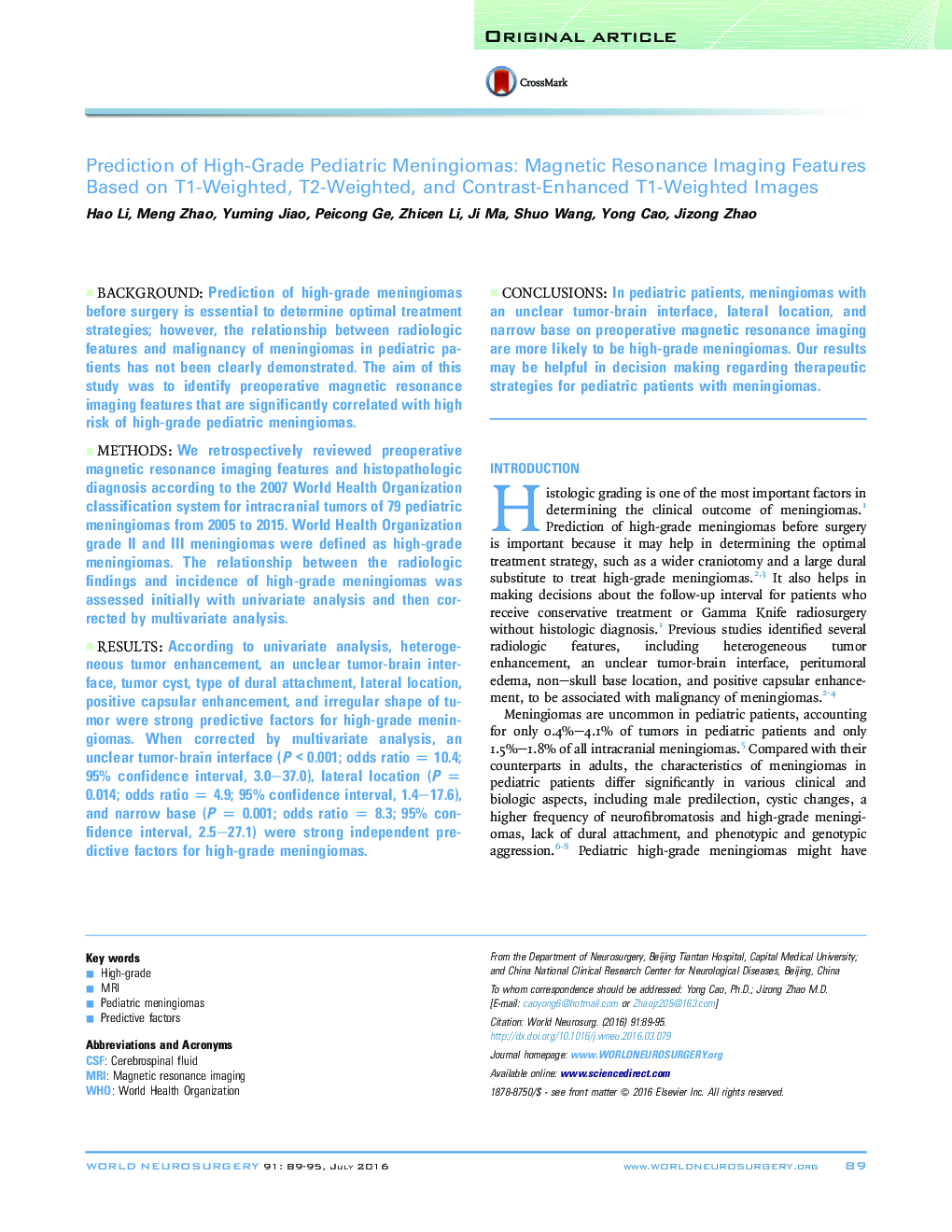| Article ID | Journal | Published Year | Pages | File Type |
|---|---|---|---|---|
| 3094531 | World Neurosurgery | 2016 | 7 Pages |
BackgroundPrediction of high-grade meningiomas before surgery is essential to determine optimal treatment strategies; however, the relationship between radiologic features and malignancy of meningiomas in pediatric patients has not been clearly demonstrated. The aim of this study was to identify preoperative magnetic resonance imaging features that are significantly correlated with high risk of high-grade pediatric meningiomas.MethodsWe retrospectively reviewed preoperative magnetic resonance imaging features and histopathologic diagnosis according to the 2007 World Health Organization classification system for intracranial tumors of 79 pediatric meningiomas from 2005 to 2015. World Health Organization grade II and III meningiomas were defined as high-grade meningiomas. The relationship between the radiologic findings and incidence of high-grade meningiomas was assessed initially with univariate analysis and then corrected by multivariate analysis.ResultsAccording to univariate analysis, heterogeneous tumor enhancement, an unclear tumor-brain interface, tumor cyst, type of dural attachment, lateral location, positive capsular enhancement, and irregular shape of tumor were strong predictive factors for high-grade meningiomas. When corrected by multivariate analysis, an unclear tumor-brain interface (P < 0.001; odds ratio = 10.4; 95% confidence interval, 3.0–37.0), lateral location (P = 0.014; odds ratio = 4.9; 95% confidence interval, 1.4–17.6), and narrow base (P = 0.001; odds ratio = 8.3; 95% confidence interval, 2.5–27.1) were strong independent predictive factors for high-grade meningiomas.ConclusionsIn pediatric patients, meningiomas with an unclear tumor-brain interface, lateral location, and narrow base on preoperative magnetic resonance imaging are more likely to be high-grade meningiomas. Our results may be helpful in decision making regarding therapeutic strategies for pediatric patients with meningiomas.
